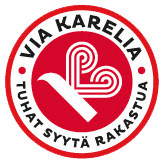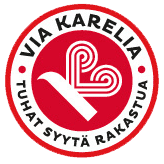Finland in the Second World War
Finland entered the Winter War, when the Soviet Union attacked Finland on 30 November 1939.
The defensive battles of the Winter War were mainly fought on the Karelian isthmus, e.g. in Summa and Taipaleenjoki river, and between the north shore of Lake Ladoga and the Kollaajoki river, east of Loimola. Toward north, the Soviet army attacked using the roads leading to Finland, and initially proceeded to Finnish ground, as it now stands. The southernmost attack within the current borders was in Ilomantsi. North of Ilomantsi, heated battles were fought in Lieksa, Kuhmo, Suomussalmi and Salla. The most famous of these is the Battle of Raate Road, where the Finnish troops destroyed the Soviet 44th division.
When the peace treaty came into force on 13 March 1940, the war still raged on in Europe. The focus was then in western Europe.
The second stage of the war was named the Continuation War in Finland. Finns felt this was a continued effort to the Winter War, because Finland – aided by Germany – tried to right the wrong that was the areas lost to the Soviet Union. Deep down, it was about more than that. After the Winter War, the WW II had advanced to a situation, where Finland was dealt a very bad hand. There was a risk of the Soviet Union attacking again. On the other hand, Germany was a risk as well, having an interest to the nickel reserves in Petsamo (Petchenga). Finally, Finland had to pick a side.
When Germany attacked the Soviet Union in June 1941, Finland followed suite a couple of days later. First, in the summer of 1941, the Finnish troops took positions within the current area of Finland, but only Kitee has a memorial for these military operations. The most important battles in the Continuation War were fought on the eastern side of the current border, later even east of the old border, in East Karelia.
When the Finnish army retreated in the summer of 1944, the only battles within the current area of Finland took place in Ilomantsi. That is where the Finns fought the Soviet army into a standstill in July and August in 1944. The entire Soviet offensive was halted, and the Soviet Union no longer demanded unconditional surrender from Finland. There was a chance for peace between Finland and the Soviet Union, a chance for Finland to leave WW II.
The cease-fire between Finland and the Soviet Union in 4 September 1944 soon led to the third stage of the war, the Lapland War. There were over 200,000 German soldiers in Lapland, and they were not ready to leave voluntarily. The armistice of 19 September 1944 demanded Finland to expel German Troops from Lapland. The Lapland War was basically over in late October, 1944, but the last German soldiers retreated to Norway only in late April, 1945.




